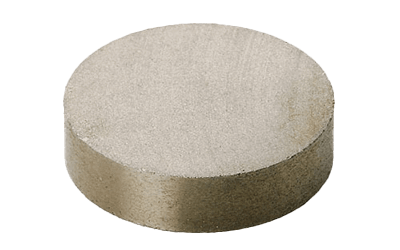What Is a Samarium Cobalt Magnet?

A samarium cobalt magnet, a type of rare-earth magnet, is predominantly composed of samarium and cobalt. Known for its strong magnetic force and excellent heat resistance, it does not require plating due to its rust resistance. However, it is prone to chipping and is extremely brittle due to its high hardness.
Applications of Samarium Cobalt Magnets
These magnets are used in high-temperature environments, such as in microwave ovens and magnetrons, automotive motors and ignitions, and various compact devices like actuators, magnetic sensors, microswitches, small relays, and laser devices. Their heat resistance and compactness make them versatile for both industrial and smaller-scale applications.
Properties of Samarium Cobalt Magnets
With samarium and cobalt as their primary components, these magnets boast a high Curie temperature (700 to 800°C), enabling them to maintain magnetism in high-temperature conditions. Their rust resistance stems from the absence of iron. Despite their advantages, the rarity of the materials makes them expensive and subject to price fluctuations.
Other Information on Samarium Cobalt Magnets
1. Ignition Risks
Samarium cobalt magnets can ignite under certain conditions, especially when polished surfaces come into contact with air. They are brittle and can produce flammable metallic powders upon impact. Therefore, they are classified as hazardous materials, necessitating careful handling to prevent the formation of potentially flammable powder.
2. History of Samarium Cobalt Magnets
Research into rare earth magnets began in the 1960s, leading to significant advancements in magnet technology. The discovery in the 1970s that samarium combined with cobalt could dramatically improve magnet performance led to the invention of the samarium cobalt magnet by Dr. Yoshio Tawara in Japan. This magnet’s development, including the Sm2(Co,Fe,Cu,Zr)17 composition, enabled the miniaturization of devices like Sony’s first-generation Walkman.